When you know what to plant next to this or...
How to Grow and Care for Snake Plant [Sansevieria or Dracaena Trifasciata]
Snake Plant, often called Sansevieria or Dracaena Trifasciata, is easy to care for. The plant came to homes of flower growers from India and Africa. In its homeland, Snake Plant is used for many purposes: fibre is extracted from the leaves to make coarse fabrics, ropes and tail-ropes. And of course, it is more important that almost all parts of the plant are now used for medicinal purposes.
Snake Plant (Sansevieria Plant, Dracaena Trifasciata) is popular with plant lovers for extreme unpretentiousness - it is not afraid of low air humidity, dust, and even the air pollution from factories of industrial enterprises. Caring for Snake Plant is simple and doesn’t take much time.
✔ We Released The Dracaena HandBook
CLICK HERE TO LEARN MORE >>
Description of Snake Plant (Sansevieria)
The leaves of Dracaena Trifasciata, Snake Plant or Sansevieria, are sword-like, with a striped pattern. They can be light and dark green, and the strips are cream or yellow going along the edge, or dark, delineating silvery-green leaves. The most common species in room culture is the Three-band Sansevieria.
It has flat large leaves decorated with dark green wavy stripes. Sansevieria blooms in April-May, filling the room with vanilla scent. During the flowering period, the plant throws out an arrow with small, white-green or pink-purple florets collected in a cylindrical or glut inflorescence.
Large Snake Plants reach a height of 150 cm, but there are also small Sansevieria, only 20 cm tall. They have beautiful, slightly bent leaves collected into dense rosettes. These plants are less popular, although also unpretentious and have medicinal properties.
Leaves of the plant contain organic acids and many nutrients. In African folk medicine, Dracaena Trifasciata or Snake Plant sap has long been used for the treatment of stomach ulcers, inflammation of the middle ear, gynecological diseases.
Decoction of roots and leaves is used in case of general weakness, convulsions and skin itching. Africans believe that smoke from burning Sansevieria leaves relieves headache, and the decoction of the root increases efficiency.
This plant not only treats, but also cleans the air, having the ability to absorb harmful substances. In addition, it is a real oxygen production facility, which is especially active during the daytime.
Sansevieria three-band (Sansevieria trifasciata) is the most common species of Sansevieria in indoor floriculture. Due to its unpretentiousness, it is widely used for landscaping office space and other public places. This plant is firmly fixed such a name as Snake Plant for its special color of leaves.
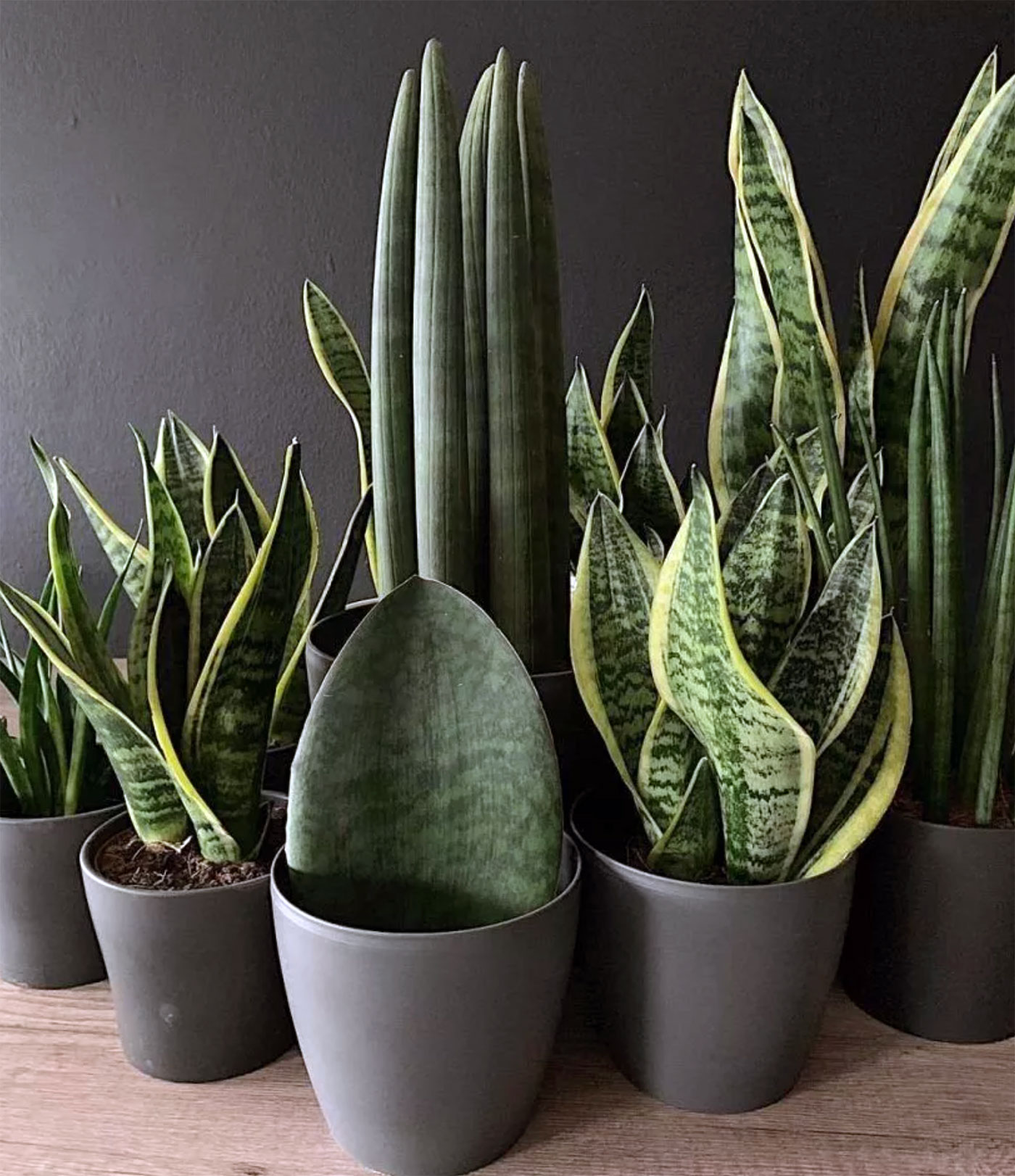
Snake Plant (Sansevieria): Plant Care Guide
Many gardeners adore it and wonder how to take care of Snake Plant (dracaena trifasciata). In fact, Snake Plant care is quite simple; it is easy to grow it even for beginner flower growers. With proper care your Snake Plant will be healthy and tall.
Sansevieria can grow in bright light and shade, it withstands a large temperature range and easily does for a long time without watering. However, still with proper care, the leaves of Sansevieria become denser, in all their glory the features of these variegated-leaved plants are manifested.
Brief description of cultivation
Flowering. It is grown as an ornamental leafy plant.
Lighting. It grows well in a slightly shaded place or in bright but scattered light.
Temperature. The plant grows well at normal room temperature, but in winter the room should not be colder +16°C.
Watering. Moisturize the substrate systematically and moderately. In the cold season, watering should be less often than in summer.
Air humidity. It normally grows at the level of humidity of the air, which is typical for living rooms.
Fertilizer. Feed the flower only during active growth once every 30 days, to do this use fertilizer for flowerless plants or for cacti.
Period of rest. Not pronounced.
Repotting. Repot the plant only if necessary, when its root system becomes tightly placed in the pot.
Propagation. By leaf cuttings and division of rootstock.
Harmful insects. Mealybugs, thrips and spider mites.
Diseases. Root rot and anthracnose.

Lighting
Sansevieria grows well even with an inexperienced flower grower, adapting to the suggested conditions.
Indoor lighting for Snake Plant can range from intense light to penumbra and shade. However, bright light is better for Sansevieria, it will contribute to the formation of strong healthy leaves and beautiful coloring.
With a lack of light, its leaves acquire a dark green color, the brightness of the colorful forms gets lost, growth slows down or stops at all. The ideal place for the plant is the window sills of the east and west windows. The south window also fits, but in the hot season it will be necessary to shade the foliage from the scorching sun.
Temperature
Snake Plant can withstand both hot and cool temperature conditions, but it is undesirable for the temperature to fall below +14°C +16°C. In summer, a pot with a plant can be put on the balcony or in the garden, but provided that at night the temperature does not drop below 5°C, and at noon the sun does not get on its leaves. The perfect temperature for Snake Plant in summer is about +21°C +28°C.
In winter it is necessary to carefully monitor that the leaves of the plant do not touch the cold window and the plant does not get frosty air while ventilating - a decrease in temperature even to +5°C causes hypothermia, rotting and death of Snake Plant. The lower the temperature of the room, the less frequent and abundant the watering of Sansevieria should be.
Watering
Watering plays great importance in the life of Sansevieria. If you wonder how often to water Snake Plant, you should remember that this is a succulent plant, it stores water in its tissues, so excessive watering of Snake Plant will lead to decay and death of it.
From spring to autumn, the plant needs moderate watering, when the soil completely dries out between watering, and in winter - rare watering. However, watering should be careful, try not to wet the middle of the rosette, otherwise the rotting of the plant may occur. Excess moisture is ruinous for Sansevieria, causing the die-off of roots and leaves.
Although Sansevieria does not need spraying, but its leaves should be wiped at least once a month with a damp soft cloth to remove dust.
Use soft filtered or well-settled water, otherwise white stains will appear on the leaves of Snake Plant.
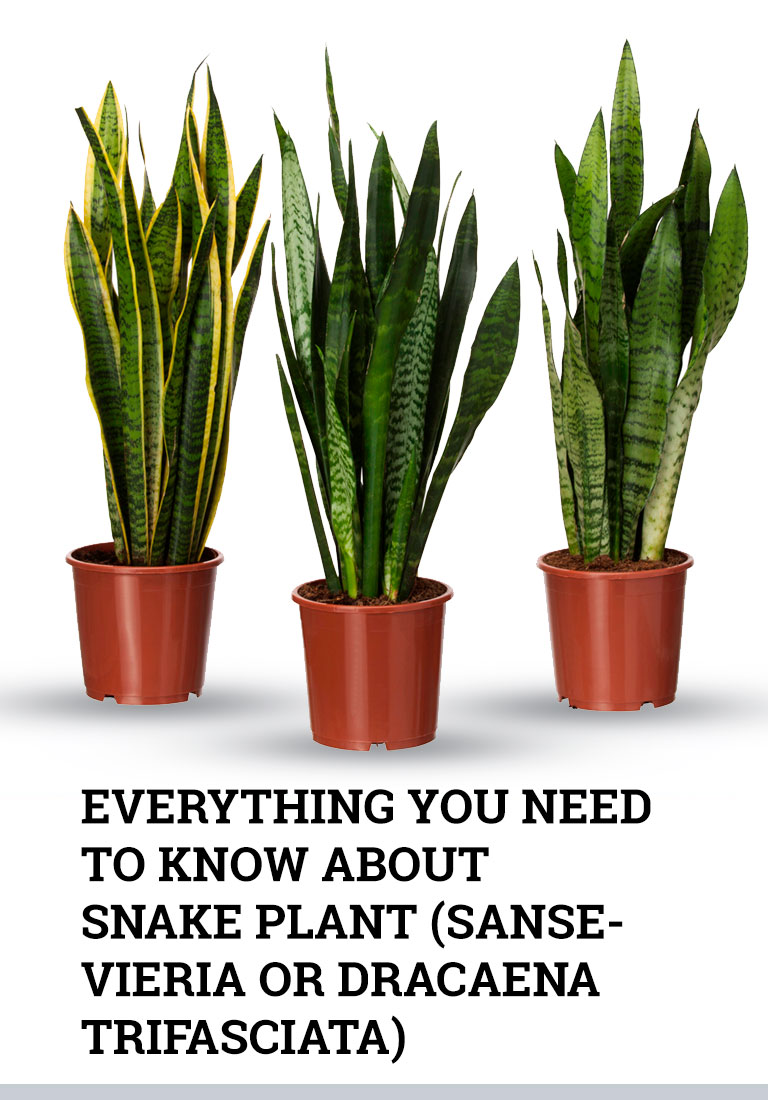
Air humidity
Air humidity plays no role for Sansevieria, these plants are adapted to dry air, so absolutely do not need high humidity. An average humidity is perfectly acceptable for Snake Plant.
Fertilizer
During the growing season, plants of Sansevieria should be fed with fertilizers for cacti. It is better to use formulations with a large amount of potassium and phosphorus. In this case, the dosage specified by the manufacturer should be reduced by half. Dilute the fertilizer in water, and use the resulting solution to water the flower.
If Snake Plant is in the shade or the temperature of the room is low, then the extra nutrition should be reduced or completely abolished. Excess fertilizers can cause rotting of the plant, loss of varietal features, deformation of leaves.
Pruning
The pruning procedure of Snake Plant is to remove old leaves, which lead to the loss of decorative appearance of the plant. Such manipulations allow better and faster growing of young Snake Plants. Among other things, cut dried ends of the leaves. However, it is important to remember that removing off too many leaves can provoke a slowdown in the growth of the plant.
Repotting
Repotting of Sansevieria is only required when the pot becomes cramped, once every few years. Young Snake Plants should be repotted annually in March-April, adult ones - every 3 years. Powerful rootstocks of Snake Plant are able to break the pot. While choosing a pot for Snake Plant, preference should be given to wide and shallow pots, since roots and rhizomes grow wide, without going deep.
The soil for Snake Plant should be well drained, for this purpose it is necessary to add about 30% of the sand to the universal soil or soil for roses.
Soil mixture for Sansevieria can also be prepared from humus, peat and sand (3:1:1). Sansevieria looks good in flat pots, planted together with ampelous or soil cover plants. In this case, it needs a soil mixture of humus, peat, sand, compost (3:1:1:1) and extra nutrition 2 times a month.
Do the repotting of Snake Plant as follows:
Take the plant out of the pot, separate the roots from the old soil, check whether they have rot or different damage. Pour expanded clay at the bottom of a new pot, and on top - prepared soil, leaving a short distance to the edges of the container. In the middle of the pot put your plant, slightly pressing the roots and covering them with soil. Moisten the soil and put the pot in the chosen place.
Brief description of cultivation
Leaves turn yellow and soften - Snake Plant began to rot due to overhydration of the soil or water entering the center of the rosette. You can save the plant only by removing all rotten parts, treating fungicide against fungus disease, drying and replating into fresh sandy soil.
Leaves soften without losing color - the plant is frozen. Remove all affected parts of Snake Plant, sprinkle the slices with coal, replant, if the underground part of Snake Plant is affected, change the conditions.
Dark brown spots on leaves - the plant lacks light, the soil is over hydrated, the plant has received sunburn or overcooled. Cut damaged leaves, change conditions.
White dry spots on leaves - Snake Plant has received sunburns. Gradually accustom it to the direct sun, especially after a long time in a dark place.
Pests. Sansevieria is often affected by parlatoria and mealybugs, it can also be affected by Tetranychidae.
Toxicity. Snake Plant is highly toxic and poisonous for cats and dogs when ingested. It can cause excessive salivation, pain, nausea, vomiting, and diarrhea. Remember that Sansevieria is not safe for cats so put the plant where your favorite pet can’t reach it.
Poisonous
Remember that Snake Plant (Sansevieria) or Dracaena Trifasciata is toxic to both cats and dogs. Do not allow your pets chew the leaves of the plant. It can cause weakness, vomiting and indigestion. At the first signs of poisoning, immediately bring your pet to a veterinarian. See more about pets and the effect toxins have here at the ASPCA.
How to propagate Snake Plant

How to propagate Snake Plant is the question many people wonder. Sansevieria is propagated in spring or summer in vegetative ways - by division of rhizomes or leaf cuttings.
To preserve signs, variegate and some other Snake Plant varieties should be propagated only by division of rhizomes. While propagated by leaf cuttings, the characteristics of the variety are often lost and young plants of natural species grow, which lose their heterophylly.
The rhizome of Snake Plant should be divided with a sharp knife so that each division has a growth point and a rosette of leaves. Sprinkle the wounds of the divides with coal, and after that plant them on individual pots, into the sandy substrate. During the first time, water young Snake plants in a very limited way. After rooting, several new shoots and new leaf rosettes will be formed from each piece of rhizome.
For Snake Plant propagation with leaf cuttings, cut a healthy leaf into fragments of 5 cm, dry the leaf parts in the air, then treat the lower cut with a fertilizer and plant by 1-2 cm in a sterile, slightly wet sand or a mixture of sand and peat. It is not necessary to put it in the greenhouse, as high humidity can cause rot. Provide bright scattered light and the temperature about +20°C +25°C. Rooting of Snake Plant lasts about 6-8 weeks, after which young scions begin to grow.
Treatment with Snake Plant - Recipes
Ulcers and wounds
Ingredients: fresh Sansevieria leaf
Cut from Snake Plant an old leaf, rinse it in boiled water, dry, grind and squeeze the sap. Moist a gauze napkin in the sap, apply to the affected area, fix it with a bandage. Change the bandage 2 times a day.
Itching skin
Ingredients: 2 tbsp. spoons of Sansevieria leaf, 250 ml water
One dry leaf of Sansevieria should be grinded, pour boiling water and cook it in a water bath for 10 minutes, infuse until it is cooled. Wash the affected areas with broths and apply compresses at night. The course of treatment is 10 days.
Otitis
Ingredients: fresh Snake Plant leaf.
Cut an old Sansevieria leaf, rinse in boiled water, drain, grind and squeeze the sap. Bury in the ear for 12-15 drops a little warmed, but not hot Snake Plant sap 2 times a day.
Be careful: Snake Plant contains very poisonous substances! Use it for treatment only after consultation with your doctor. Always wash your hands after working with the plant.
Snake Plant Benefits & Properties
The composition of Snake Plant includes a large number of biologically active substances, but the most important of them are saponins, because if they are used correctly, they can be very useful. In official medicine, saponins are used in the production of drugs that have anti-inflammatory, expectorant, choleretic and laxative properties.
In alternative medicine, Snake Plant is used for inflammation of the oral cavity, cystitis, otitis, cuts and other damage to skin. Also saponins have foaming properties, so they are widely used in the cosmetic industry for the production of shampoos and liquid soap.
During pregnancy, it is better to abandon the use of Snake Plant as a healing agent, since it includes substances that have an abortive effect.
Snake Plant (Sansevieria) Types & Varieties
Snake Plant, or Sansevieria, has a creeping rhizome with basal leaves, powerful and stiff, reaching a height of 1 meter or more. The colors of its leaves are of different shades of green and brown, some have stripes or spots. The flowering of Snake Plant is not too attractive: white flowers with greenery, collected in cylindrical inflorescences, opening up to sunset, exude a delicate vanilla aroma. The fruit of Snake Plant is a berry with several seeds, but in room conditions, Sansevieria bears fruits rarely.
In total, there are about 70 Sansevieria varieties, but about a dozen of them are used in indoor floriculture. Many flower growers prefer varietal plants, as the most ornamental.
The most famous Snake Plant (Sansevieria) types are:
Sansevieria Grandis
Perennial, rosette of 2-4 juicy light green leaves 30-60 cm long and up to 15 cm wide. This type of Sansevieria has dark transverse bands pass along its leaves, and a reddish border along the edge.
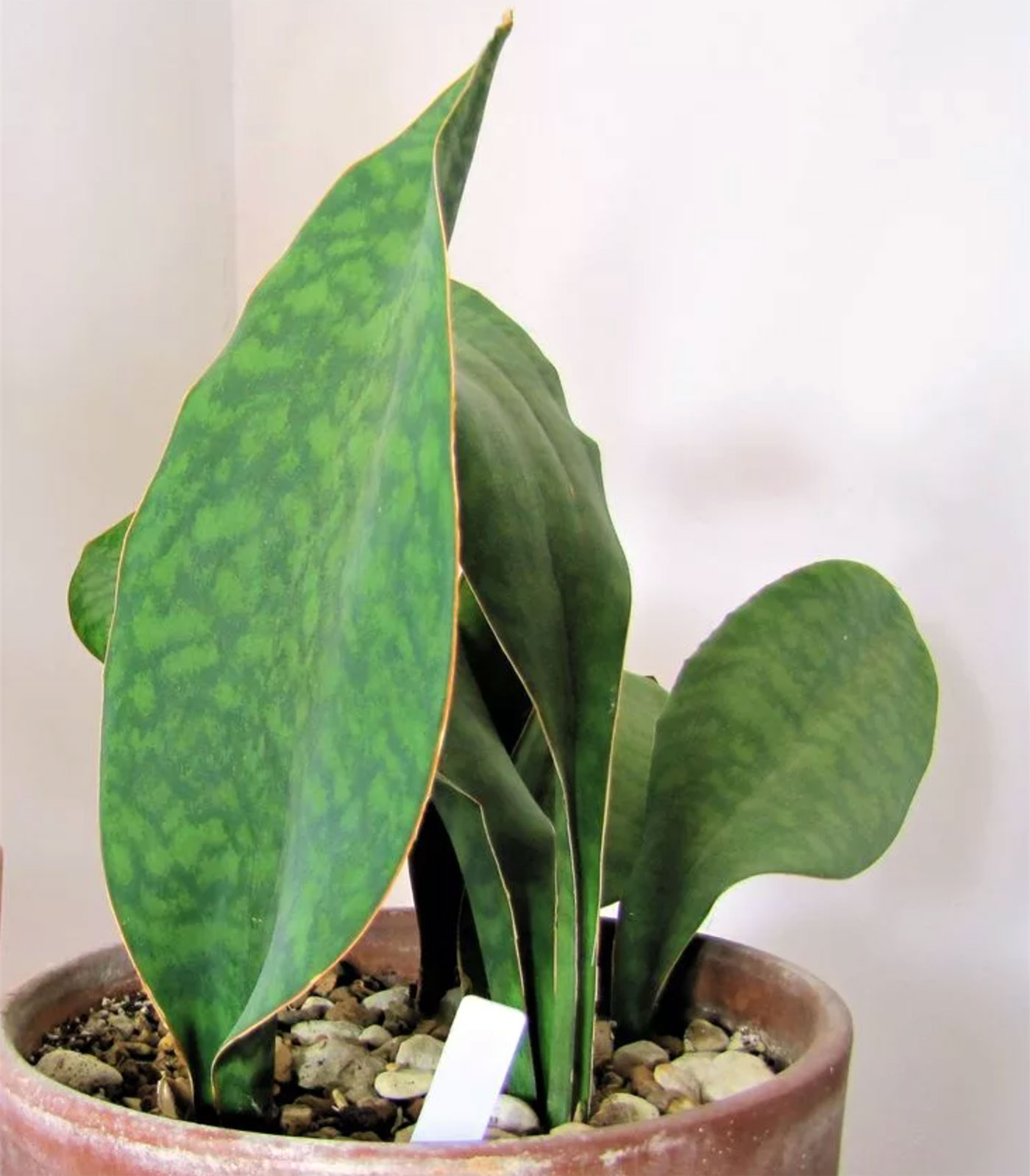
Sansevieria Hyacinthoides
This type of Snake Plant is up to half a meter high, the leaves of it grow a bunch of 2-4 pieces, with length from 14 cm to 45 cm and width - up to 7 cm. The leaf color is dark green with light green W-shaped strokes, the leaf margins are reddish or whitish.
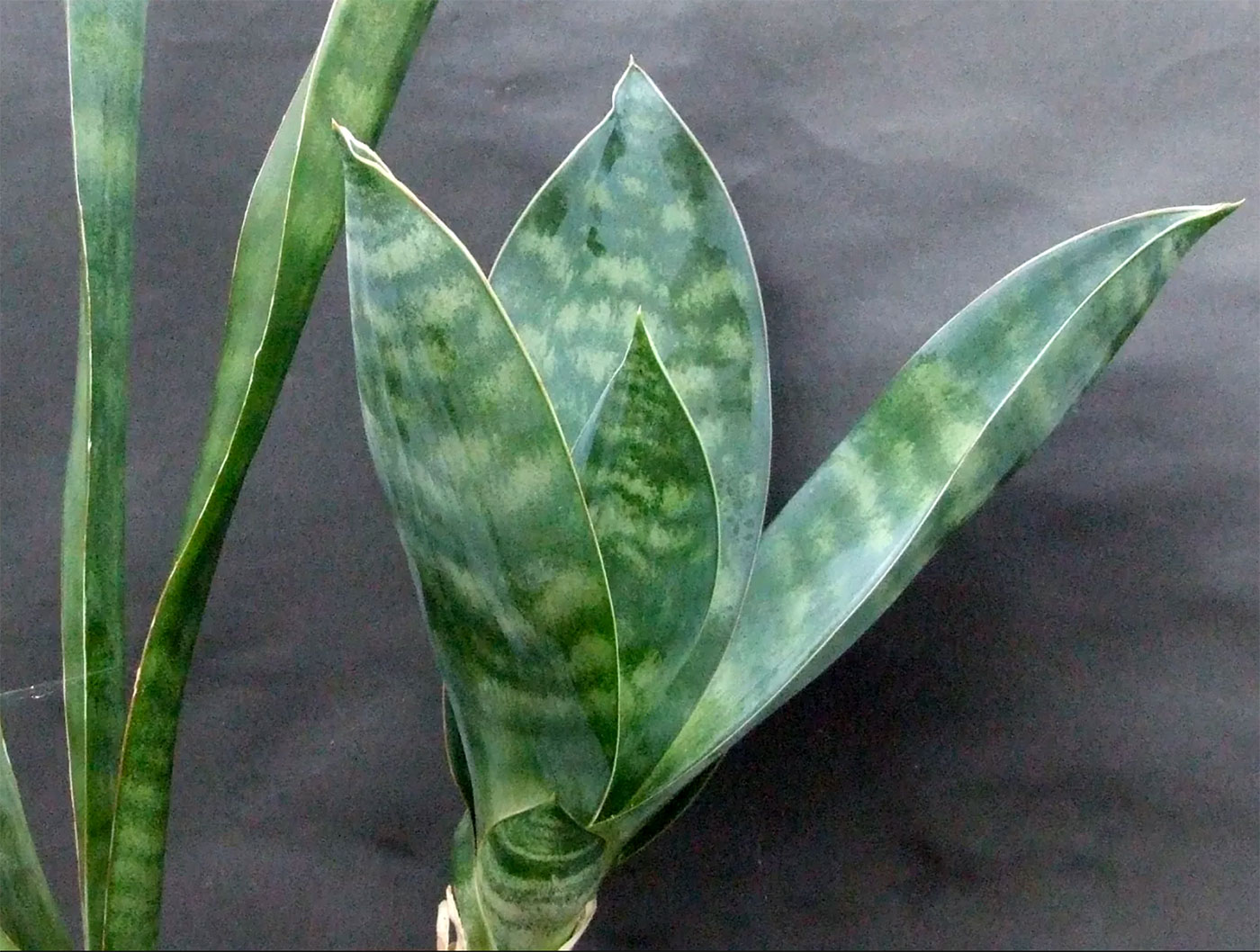
Sansevieria Dooneri
An unexpressed leaf succulent Snake Plant variety forming rosettes with up to 20 flat erect leaves up to 40 cm long and 3 cm wide. Leaf coloration is green with a dark green pattern.
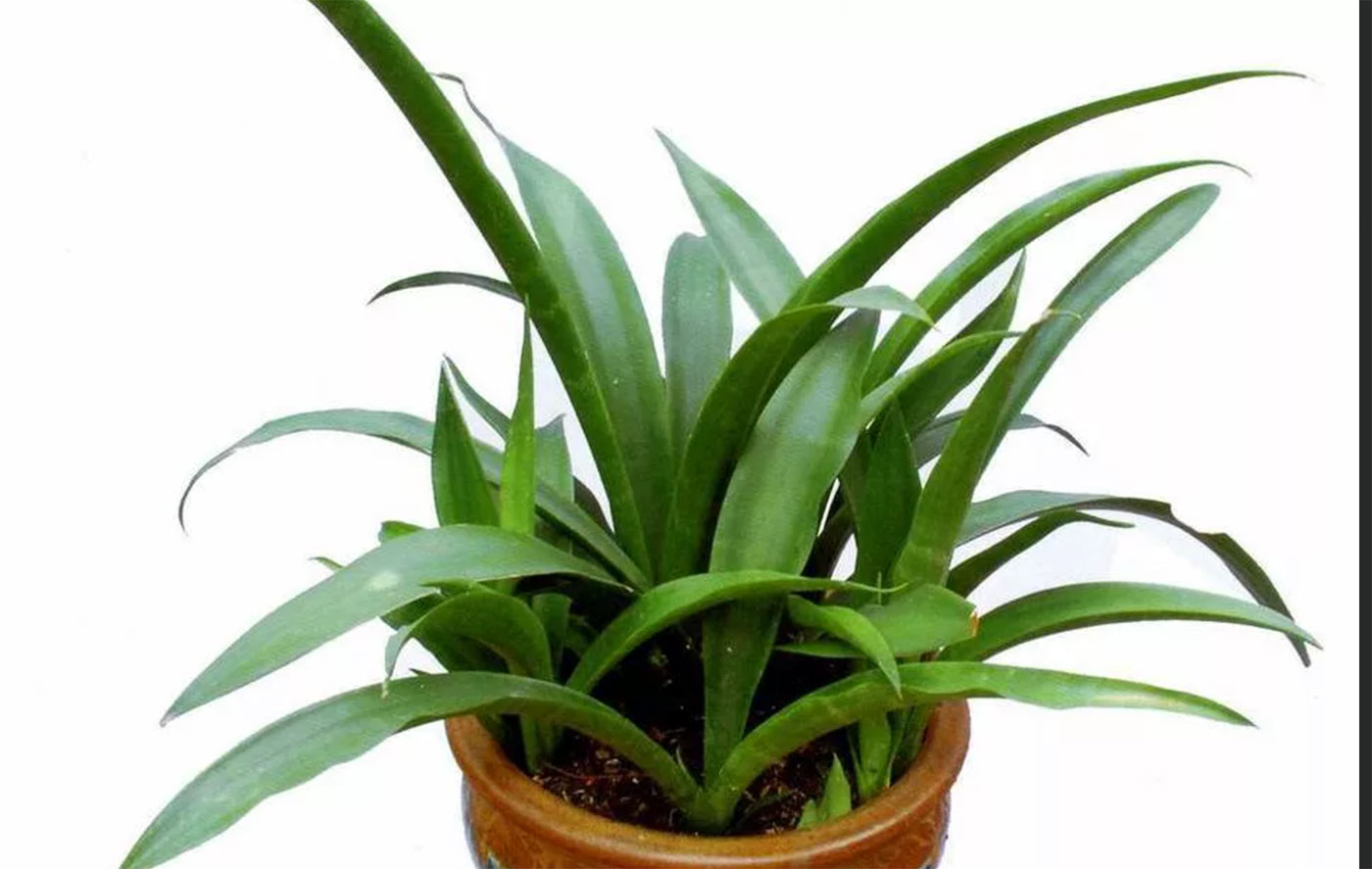
Sansevieria Gracilis
Or Sansevieria graceful - a perennial succulent: the leaves cover the base of the stem 5-6 cm high. Leaves are leathery, oval, long-pointed grey-green in colour with grey-beige transverse divorces.
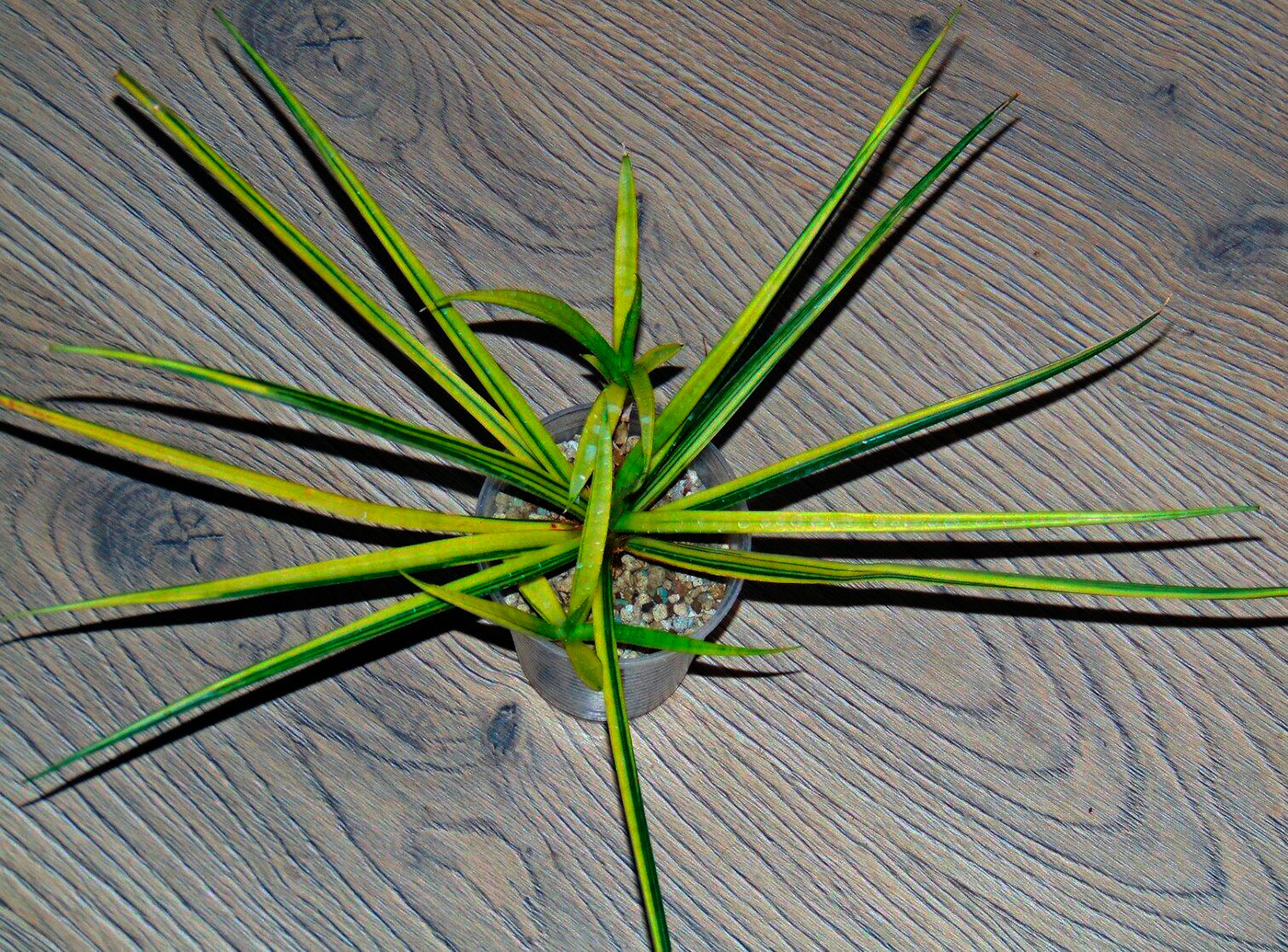
Sansevieria Kirkii
This plant has a short rhizome and rosettes with a small amount of green with whitish patches of leaves with a red-brown edging along the edge. There are varieties with brown or red-brown leaves.
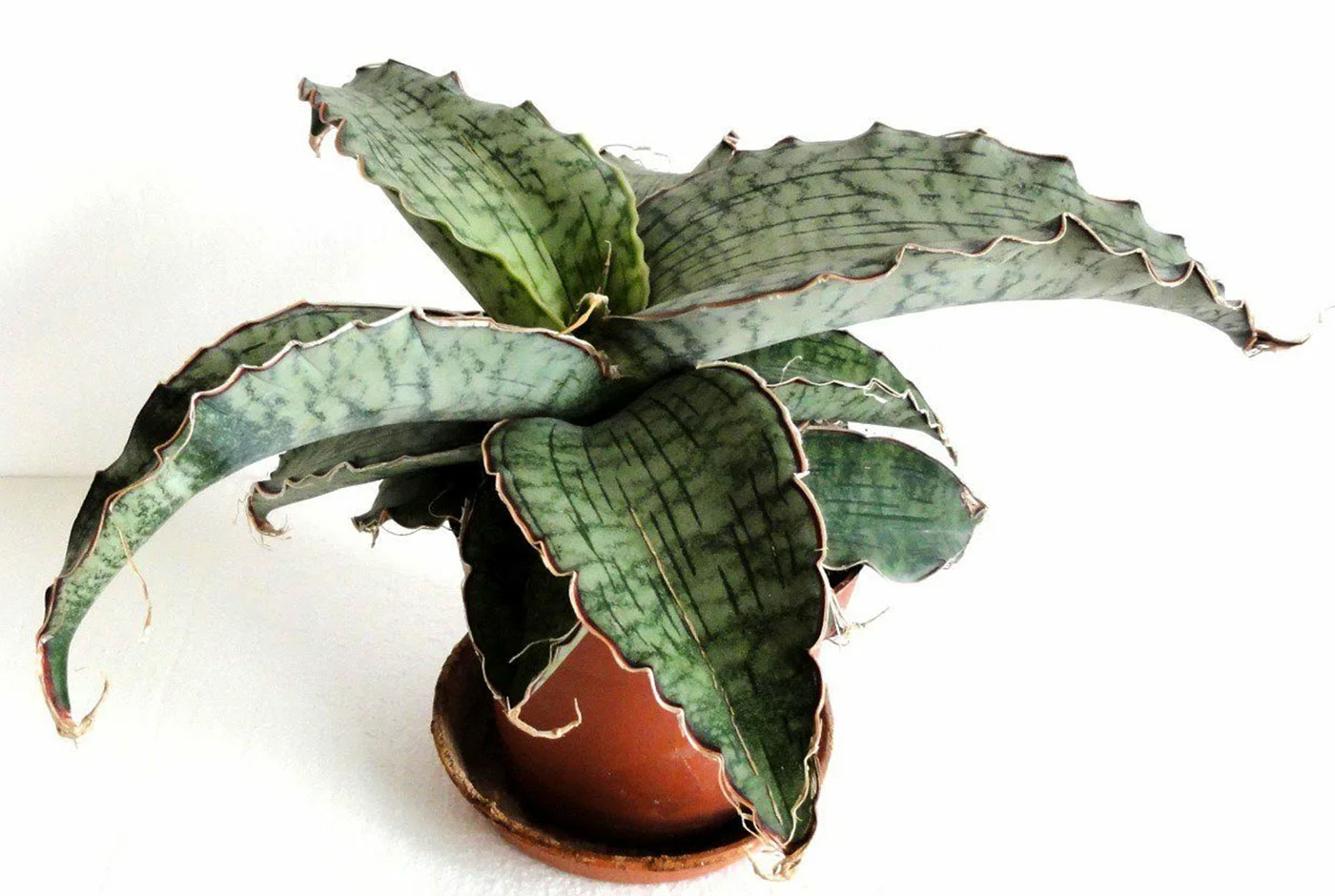
Sansevieria Liberica
Unexpressed leaf succulent with unfolded rosettes of 6 flat, parallel to the ground, leaves. Leaf lengths sometimes reach 100 cm long and 8 cm wide, but this is only in very large specimens. The colour of leaves is dark green with blurred light green stains and strokes, a thin reddish-white or brown band along the edge of the leaf.
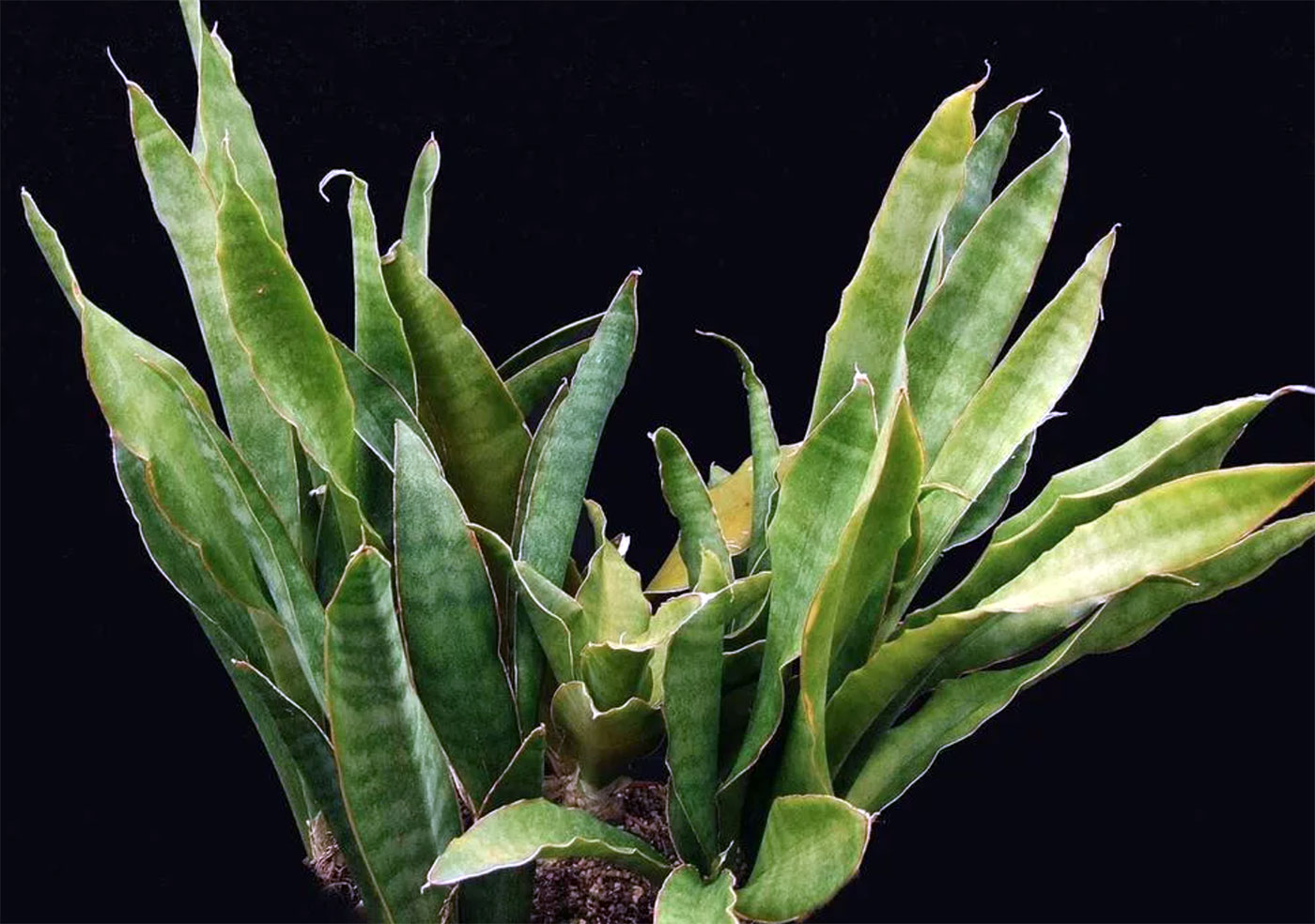
Sansevieria Trifasciata
In indoor floriculture, the most common species is the three-band Sansevieria - a tall plant with labeled leaves green or green with a yellow border of color. It is a drought-tolerant variety found in desert regions of Africa. The leaves of this Snake Plant species are collected into small rosettes. It blooms with small inflorescences collected in a panicle with a pleasant aroma.
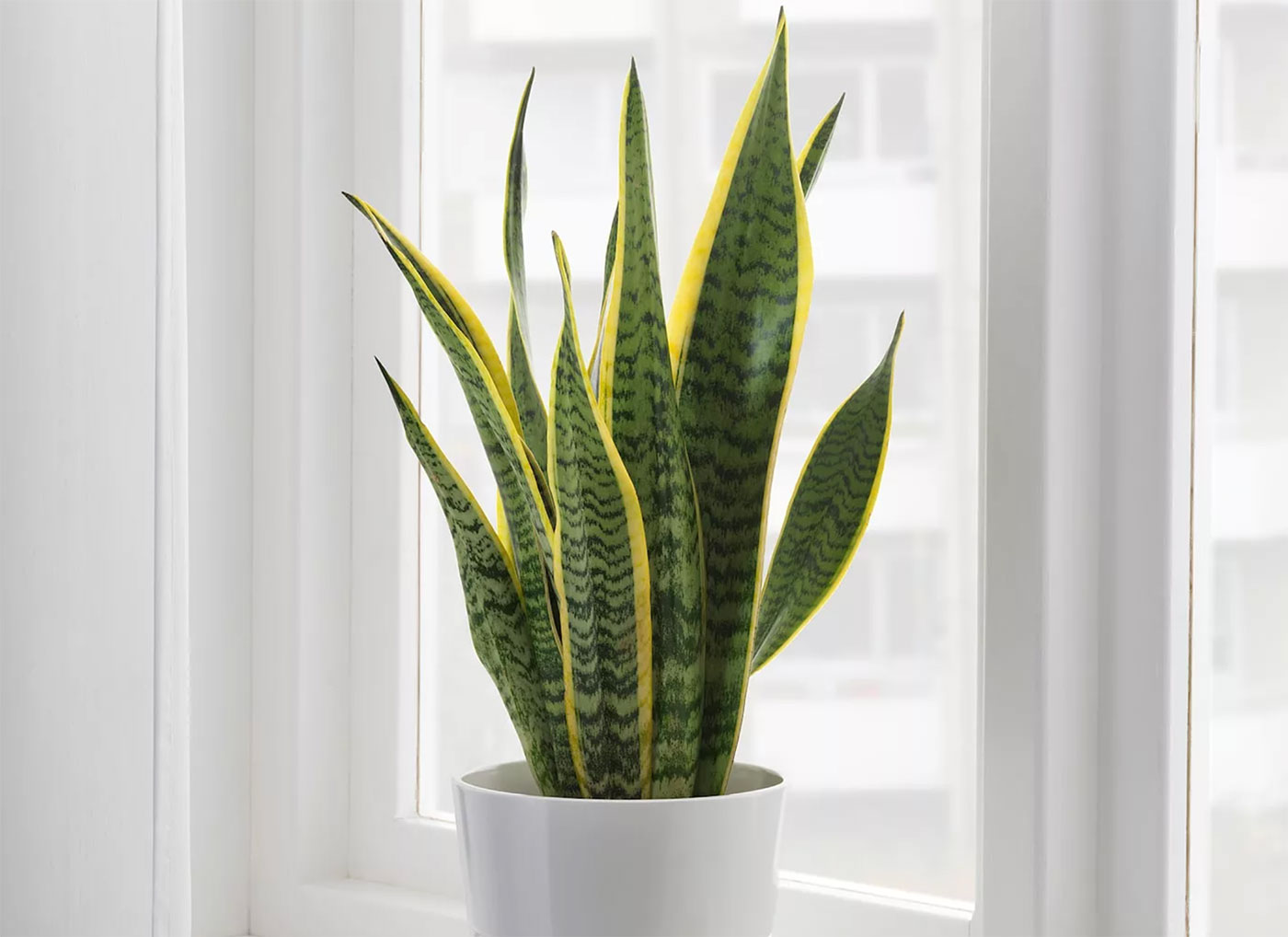
Varieties of Sansevieria trifasciata:
Sansevieria hahnii - shorter and wider leaves grow rosette in the shape of a vase
Hahnii gold - it has contrasting uneven strokes of gold color on short leaves
Sansevieria laurentii - long lanceolate leaves are bordered by narrow vertical stripes of yellow color
Sansevieria moonshine - slightly thickened, short foliage; Moonshine Snake Plant has a monophonic grey-green color with a light silvery coating.
Sansevieria Compacta
Hybrid “Laurenti”, but unlike it possesses not so long leaves. They also bend beautifully outward, creating a voluminous rosette. It grows slowly, varietal signs persist only while replanting by rhizomes. It does not tolerate excessive watering, because its leaves wilt and dry.
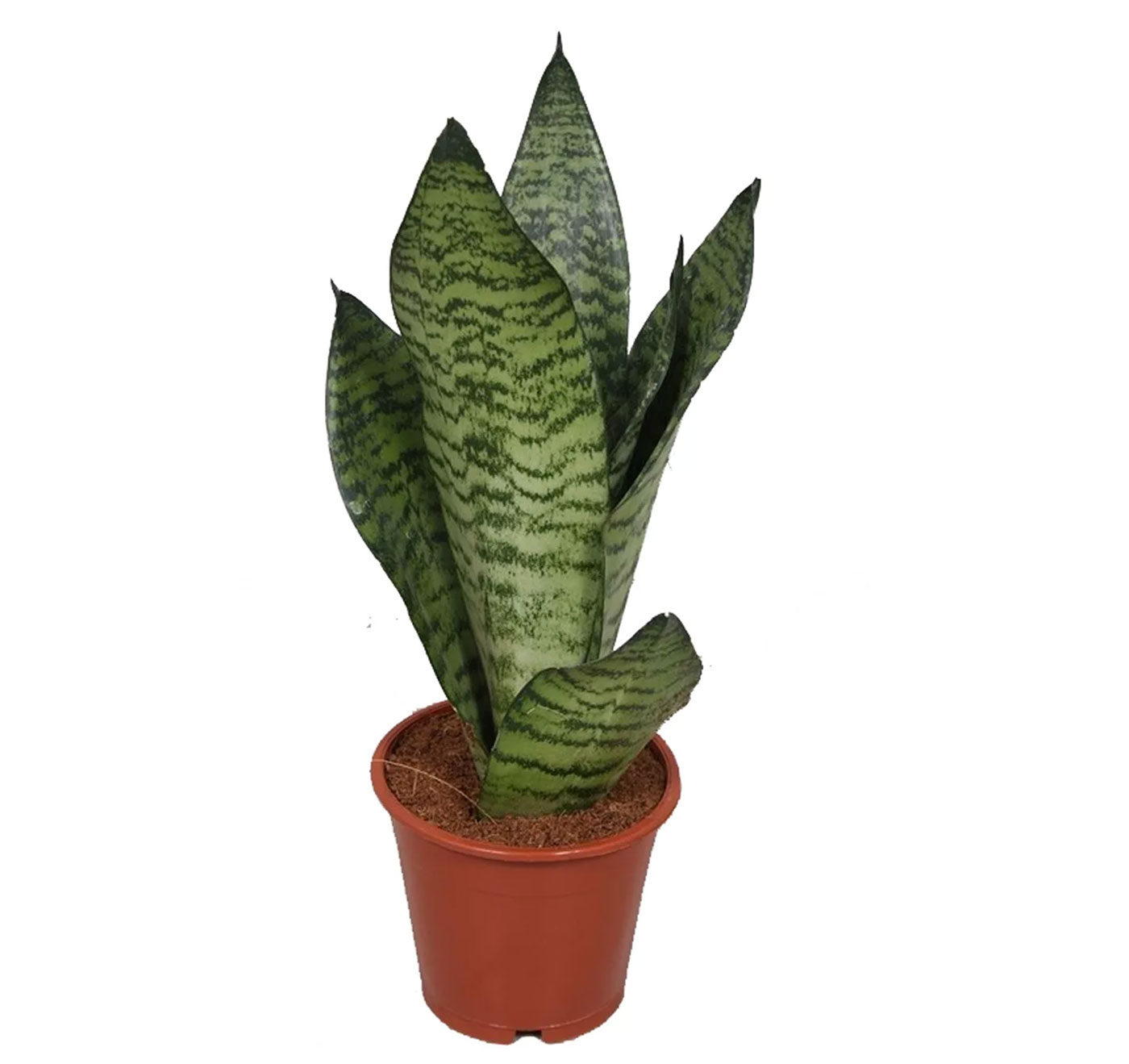
Sansevieria Robusta
This variety forms dense rosettes of small broad leaves of green color with dark stripes. It has several varieties:
“Black” - characterized by rapid growth, while the color of its leaves changes with age - from bright green to almost black with a metallic tint
“Blue” - has dense spear leaves, which grow in a horizontal position in tiers and have a bluish tinge with a light waxy coating
“Black Coral” — with silvery patterns on the surface of its leaves.
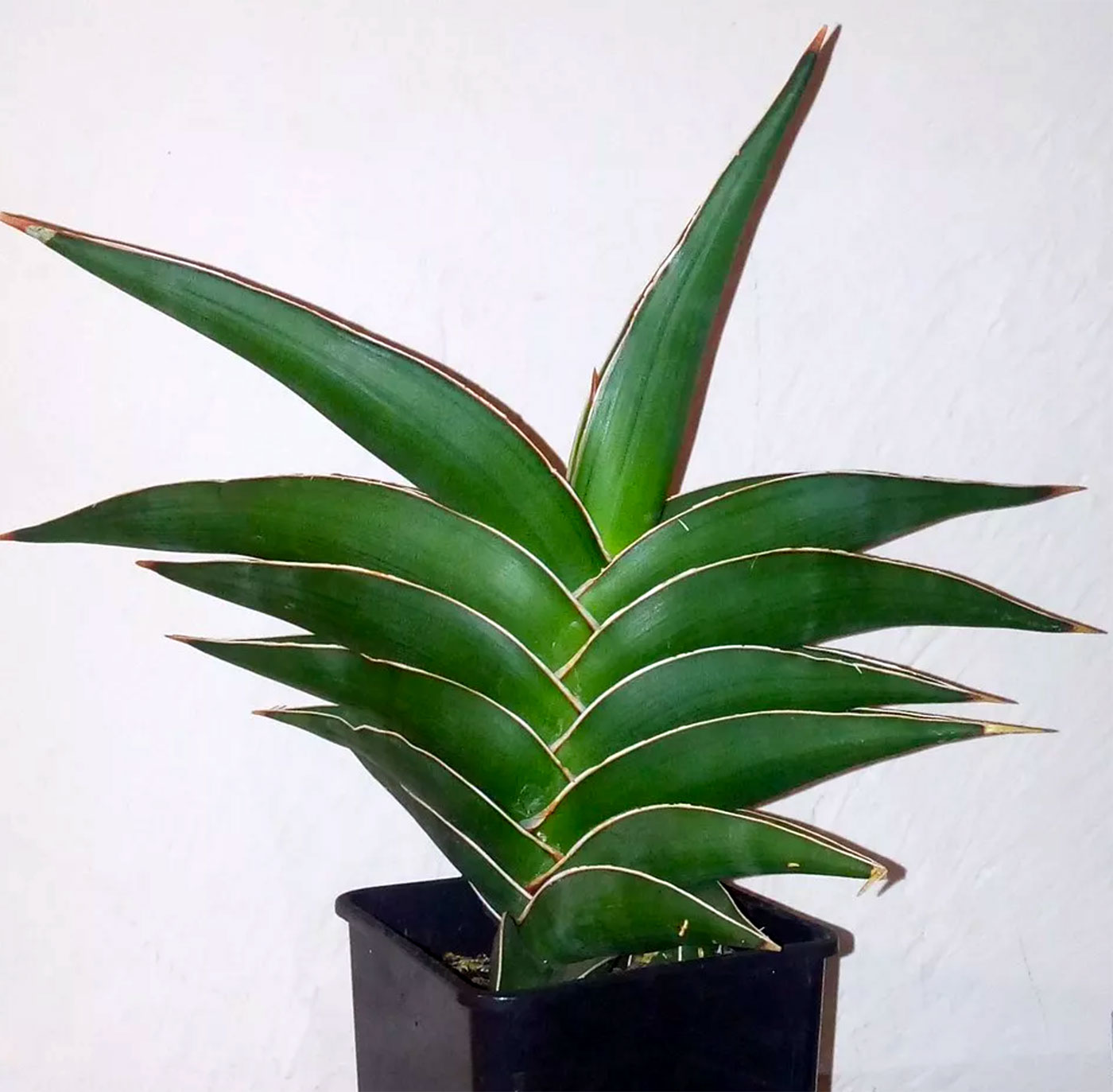
Sansevieria Sensation Bantel
It stands out among other Snake Plant varieties by strips of white, arranged along the entire length of the leaf plate and alternating with dark emerald dots. This coloring gives the plant an unusually elegant appearance. Its leaves are dense, bright green, forming round rosettes up to 60 cm tall. It cleans the air well and does not like bright sunlight.
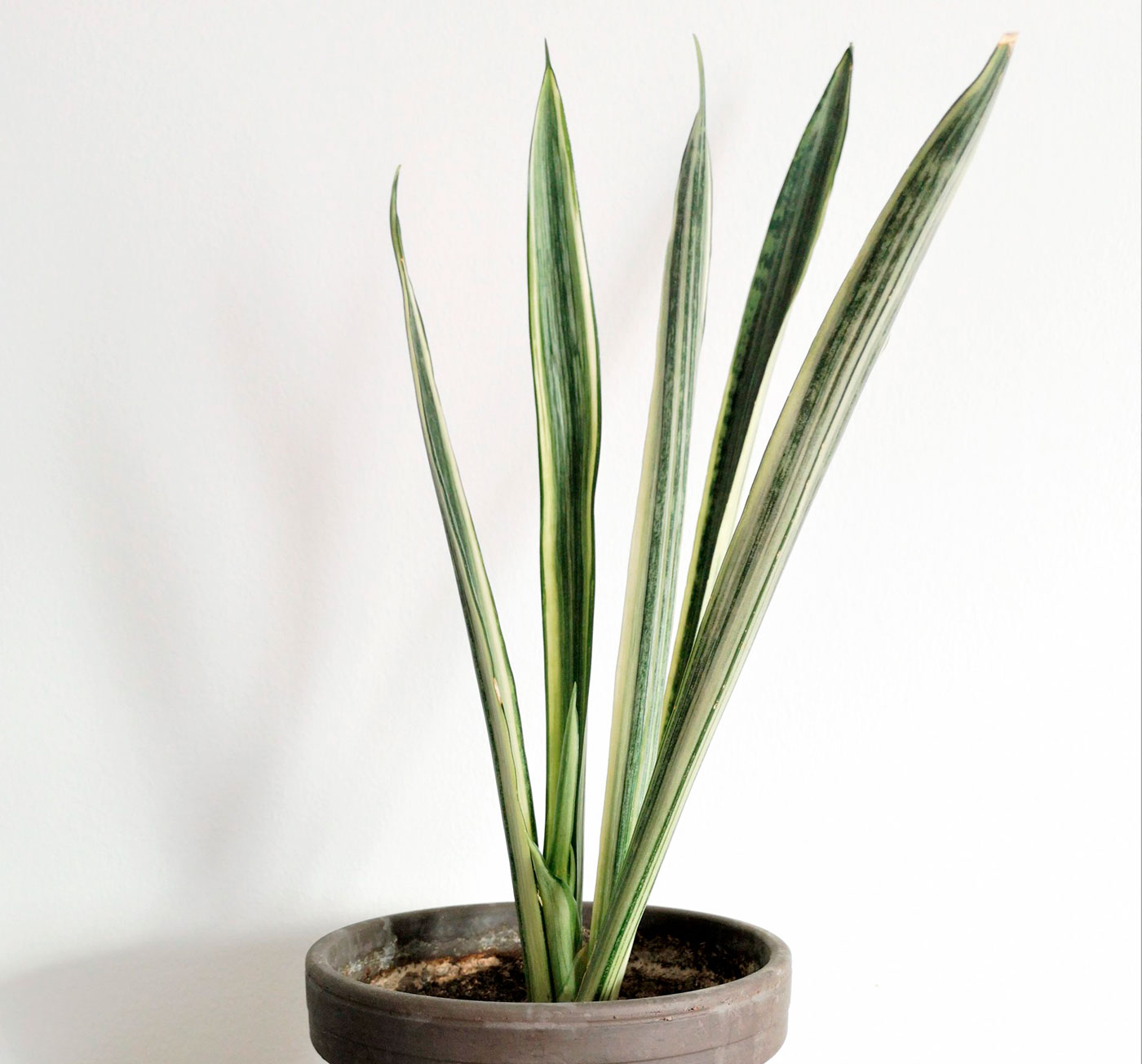
Sansevieria Futura
A newly emerged cultivar, which is characterized by dense rosettes consisting of approximately 10 leaves of light green coloration, which have dark stripes and yellow edging. This cultivar has several subspecies:
“Futura Superba” - with wide dense leaves, bordered by a yellow stripe.
“Futura Gold” — leaves are slightly smaller than the previous species, and have more golden tint.
“Black Gold” — with long narrow leaves giving a blue tint.
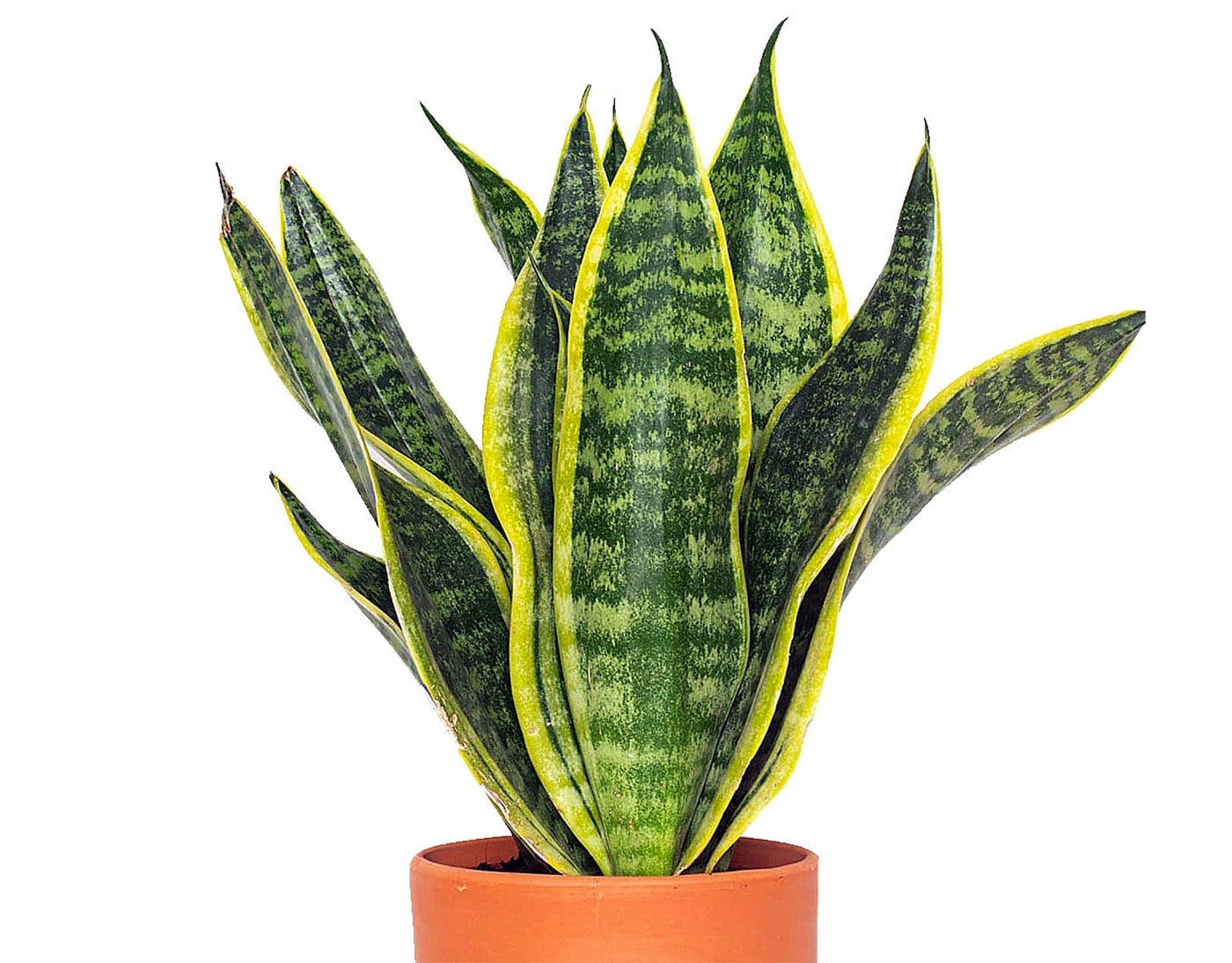
Sansevieria Cylindrica
The plant is distinguished by long cylindrical leaves of dark green color. On their surface there are vertical silvery strips and yellow strokes. The foliage forms a symmetrical rosette. Its ends are heavily narrowed and pointed. They are sharp enough to get hurt, so often the edges are closed with a cork cap. During the flowering period, a single inflorescence appears from the rosette with creamy white asterisks. Reddish strokes are barely noticeable on its petals.
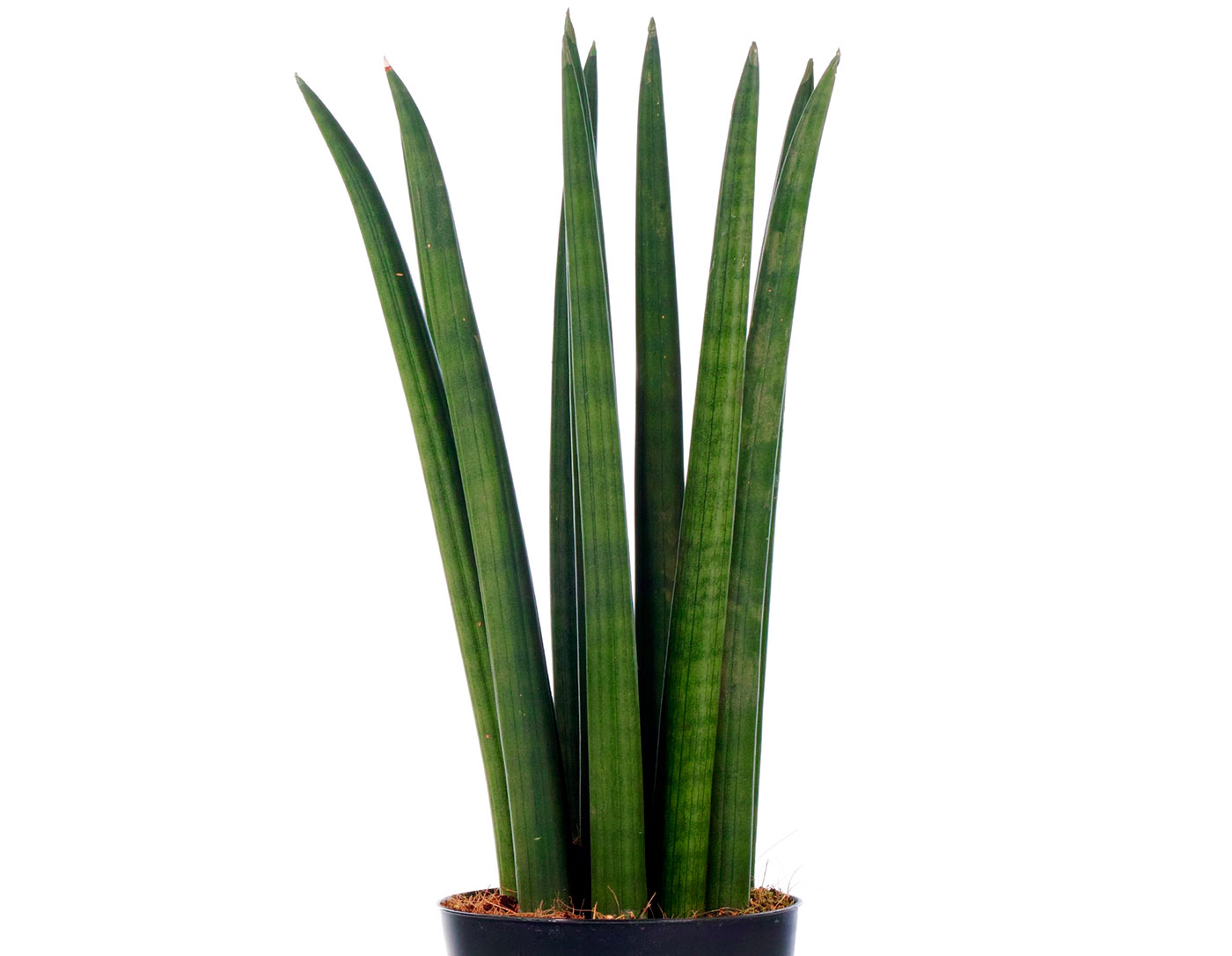
Sansevieria Eilensis
This succulent comes from a small area in Somalia in the area of the town of Eile. The species was collected in 1973 by JJohn Jacob Lavranos.
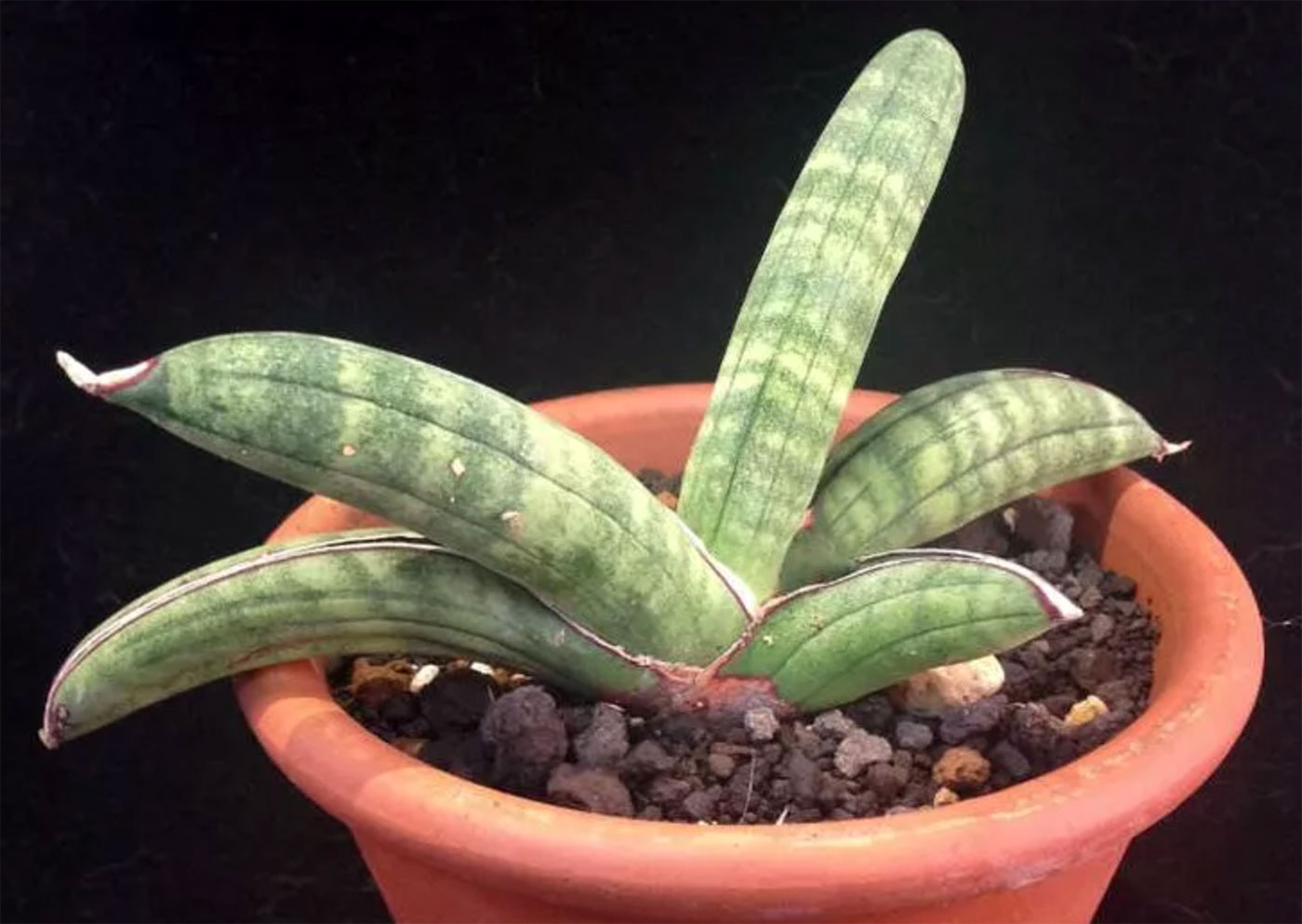
This plant is found only in a small area near Eil. This region receives less than 100 mm of precipitation annually, it is very dry, the air temperature in this region varies between +22°C +35°C, and the soil temperature is usually +24°C +27°C.
Sansevieria Eilensis is a slow-growing plant with coarse, cylindrical, bottom-curved leaves that grow from an underground rhizome. The mature plant usually has 2 to 3 leaves, succulent, 7-12 cm long and about 2 cm thick.
Its leaves are usually light bluish-green with regular bands of white. The leaves are marked with several green longitudinal lines. Young Snake Plants have a deep channel that runs the entire length of each leaf. When the plant matures, the edges of its leaves are twisted to form a smooth cylindrical leaf with a dried cuticle at the tip and base of each leaf.
To the commonest of dracaena types belong:
- Marginata
- Sanderiana
- Reflexa
- Fragrans
- Lemon Lime
- Janet Craig
- Warneckii
- Massangeana
- Compacta
- Deremensis
- Draco (Dragon Tree)
- Lisa Cane
About the Author
My name is Michael Bauer, I have been growing and taking care of plants for 20 years. My dream has become a reality. I've had many difficulties along the way, but my love for our favorite plants has really helped me.So join us!




























